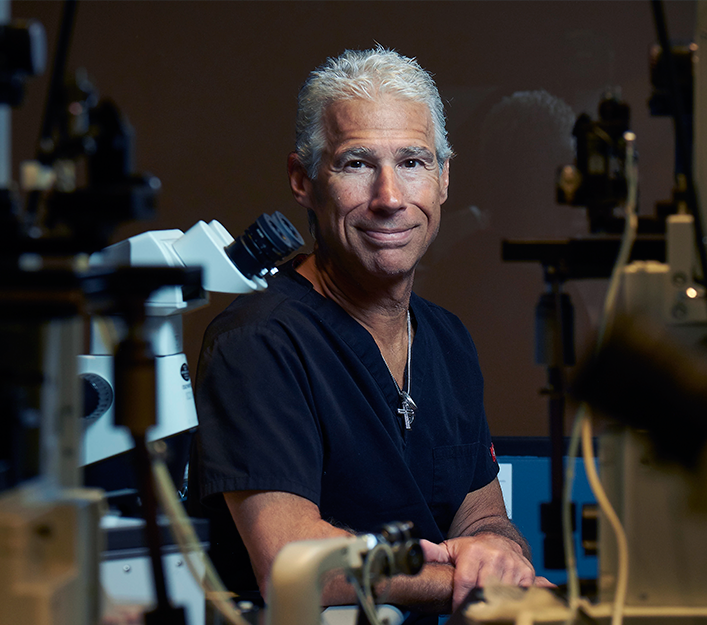We include products in articles we think are useful for our readers. If you buy products or services through links on our website, we may earn a small commission.
Positive Psychology: A Guide for Beginners

Table of Contents
Out of the over 50 perspectives of psychology that are practiced today, most tend to be problem focused. Yet, from the perspective of positive psychology, this narrow focus on fixing what’s wrong may be keeping us feeling helpless and limiting our quality of life.
This more recent psychological approach known as positive psychology trades ‘fixing problems’ for ‘enhancing what’s strong. Positive psychology uses scientific evidence to focus on clients’ strengths, hope, and resilience.
This overview of positive psychology’s origins, central facets, and practical uses can help you live a life of increased well-being and joy.
Definition
“Positive psychology is the scientific study of what makes life worth living” (Peterson, 2008)
Positive psychology is the evidenced-based study of thoughts, feelings, and behavior, with a focus on human strengths. It is a science of the mind that considers the positive aspects that empower individuals and communities to flourish.
In essence, positive psychology studies the rewarding aspects of human life, such as:
- positive experiences (moments where we experience joy, inspiration, or happiness)
- positive states (like feelings of gratitude or compassion)
- positive communities (places where we connect with others to experience something greater than ourselves)
Positive psychology believes in the resilience of people and their inherent desire to live meaningful lives of well-being.
Fast Facts
Positive psychology:
- is a science of the mind, based on evidence of what makes humans live lives of well-being
- focuses on positive human experiences, emotional states, and thriving communities
- trades in ‘fixing what’s wrong’ for ‘enhancing what’s strong’
- complements traditional psychotherapy to balance processing pain with strengthening positive aspects of people’s thoughts, behavior, and emotions
A Brief History of Positive Psychology
Like the evolving trends within the fields of medicine, politics, and education, the focus of psychology has shifted throughout the decades.
World War II marked a significant shift within the field. Psychology moved its focus away from a mission to increase fulfillment into a focus on correcting abnormal behavior and treating mental illness. This is known as the disease model, and it emphasized the pathology of the human mind, centering on what was wrong or lacking.
Then in the 1950s, the humanist movement revolutionized the field of psychology. Through its renewed interest in the positive features of the human experience, psychological theories that centered on human values and dignity were restored.
Within the humanist movement, the roots of positive psychology sprouted.
The Founder: Martin Seligman
Positive Psychology was developed by educator and psychologist Martin Seligman and colleagues at the University of Pennsylvania.
Seligman’s research throughout the 1960s and 70’s produced the concept of “learned helplessness”, or the idea that humans can become helpless if they feel out of control or victimized by their experience.
Seligman connected his theory of learned helplessness with depression, asserting that people stay depressed when they feel helpless.
Accordingly, Seligman sought to shift psychology’s attention away from its potentially limiting focus on trauma, suffering, and pain to a focus on cultivating wellbeing.
Gaining momentum in the late 90’s and early 2000’s, Positive psychology is still relatively new to the field, but has been steadily increasing in popularity because of its high efficacy.
Since its birth, Positive Psychology has been:
- shown by research to be successful in alleviating common psychological symptoms and increasing wellbeing
- named Harvard’s most popular course
- holding a central focus within the field of psychotherapy
Positive Psychology’s Three Levels
An important aspect of the science behind positive psychology is that it operates on three different levels: the subjective, the individual, and the group.
In detail, the levels of positive psychology are:
- Subjective: the study of positive experiences and their feelings, such as well-being, gratitude, happiness, contentment, and joy
- Individual: the study of the components of what makes up a happy life or a thriving person, such as the capacity to persevere, have courage, forgive, have a growth mindset, and love.
- Group: the study of the characteristics of strong communities and their virtues, such as tolerance, social responsibility, altruism, and work ethics
Defining Well-Being: An Introduction to the PERMA Model
Positive psychology is a science devoted to studying human well-being, but how is well-being defined?
To define the concept of well-being, Seligman created the PERMA model.
“PERMA” stands for:
- P – Positive Emotions: An important aspect of wellbeing is the experience of positive emotions. For instance, the ability to enjoy yourself when engaged in an activity can increase feelings of well-being.
- E – Engagement: Integral to well-being is also the capacity that we have to become completely absorbed within the tasks we enjoyed. Engagement is about finding a sense of flow in which we may lose track of time doing something we are good at and love.
- R – (Positive) Relationships: Humans are social beings. Authentic connections with others help us flourish. Having meaningful relationships significantly increases our overall well-being.
- M – Meaning: A persistently happy attitude may be conflated with thriving, but a developed sense of well-being requires a sense of meaning in one’s life. Meaning happens when we devote our energy to something bigger than ourselves.
- A – Accomplishment: well-being thrives in moments of success. Having the motivation to accomplish is an integral aspect of our well-being.
The five aspects of the PERMA model are measurable within both individuals and groups. When we cultivate each aspect of the PERMA model, well-being emerges.
The State of Flow
Psychologist and co-founder of positive psychology, Mihaly Csikszentmihalyi, studied and defined the concept of flow.
Flow is a state of mind marked by heightened focus and absorption on an immediate activity. When in a state of flow, a person may be so engaged that they lose track of time.
Csikszentmihalyi’s research centered on the way artists, athletes, musicians, and other craftsmen seemed to enter a state of profound engagement while working.
The six components that define a flow experience are:
- A profound focused concentration on a present-centered activity
- A mindful awareness of your actions
- A merging with the immediate activity and the loss of self-consciousness
- A feeling of agency and control over your actions
- A quickening or loss of the sense of time passing
- A feeling of gratifying, intrinsic reward
When both our level of skill and challenge meet in an equanimous way, entering a flow state becomes possible. A state of flow has been linked with increases in happiness, wellbeing, enjoyment, and tolerance of stress.
11 Lessons from the Study of Positive Psychology
Positive psychology is a science-based on evidence of what facilitates human flourishing.
Below are 11 research-supported findings from positive psychology research that you can begin practicing today:
- Wealth is often conflated with happiness, but research has shown that the link between the two is unreliable. Positive psychology demonstrates that focusing on increasing well-being through avenues such as gratitude or flow will make you happier than how much excess money you have.
- Spending money on experiences rather than things can make you happier.
- Focusing on what you are grateful for can increase your contentment
- Oxytocin released from empathic actions such as generosity or altruism can create a chain reaction of wellbeing in yourself and others.
- Doing the work to shift your mood (i.e. emotional labor) rather than faking it (i.e. “putting on a happy face”) does a better job to increase positive emotions.
- When you surround yourself with happy people, you may become happier. That’s because people’s happiness depends on the happiness of others.
- Acts of kindness can increase feelings of connectedness and peer-acceptance.
- Volunteering may reduce depressive symptoms and increase feelings of contentment.
- Spending money on other people rather than yourself can boost happiness.
- When positive emotions are high, your level of success increases.
- Research in the field of positive psychology has also demonstrated that workplace conditions improve when:
- positive emotions thrive
- people share their positive emotions with colleagues, creating a ripple effect
- simple acts of kindness can make a lasting effect on creating a more positive work environment
Putting Positive Psychology into Practice
Harvard psychologist Carol Kauffman described a few techniques for putting the principles positive psychology into practice:
- Reframe the negative – The human brain tends to focus on what’s wrong or what could go wrong. Psychologists call this survival strategy the negativity bias.
Instead, positive psychology can help shift your attention to what’s going well. Try the mental spotlight technique, which involves taking a moment at the end of your day to write down everything that went right. An “I did it” list, an alternative to the “to do” list, inventories accomplishments rather than what has not been done.
- Utilize a language of strengths – Similar to the majority of psychology that focuses on pain, humans commonly use self-deprecating language in social situations.
Identifying our strengths or positive qualities can be hard, especially when we are not conditioned to. However, just like working out a muscle, increasing a language focused on our strengths can be exercised. Try noticing one positive quality or strength about yourself and using it at least once a day.
- Balance the positive and the negative – In workplaces, managers often combine criticism with positive feedback in order to cultivate growth in employees. For every negative thought you notice, try offering yourself a positive word of praise.
- Cultivate positive coping strategies – When a challenge is broken down into manageable steps, hope and confidence flourish. When faced with adversity, learning to break a challenge down into smaller tasks can help cultivate feelings of determination. Try identifying skills that you have in the face of difficulty and ways to exercise them.
Potential Pitfalls
You may be thinking, isn’t this all just positive thinking? No, positive psychology is much more than a reliance on positive affirmations.
Positive psychology is commonly confused with self-help notions of ‘thinking your way into being happy’ rather than the evidenced-based theory that it is.
Positive psychology does not advocate for simply ‘thinking happier thoughts’ all of the time. In fact, research has demonstrated that pressuring people who are not naturally optimistic to think positively can be harmful.
Instead, focusing on cultivating a sense of meaning can lead to a life of authentic well-being rather than temporary or false happiness. And remember that meaning comes from connecting with something larger than yourself and helping others.
Here are some of the main differences between positive thinking and positive psychology:
| Positive Thinking | Positive Psychology |
| Self-help method designed to ‘trick’ your brain into more happiness | Research-backed science that offers a framework to increase authentic well-being |
| Focused on cognition (thoughts) only | Focuses on feelings, behaviors, and thought patterns that lead to optimal functioning |
| Suggests that by merely substituting your thoughts for positive ones, you can feel happier | Uses evidence to determine what makes people and communities thrive and providing research-backed tools to help people find deeper meaning in life |
The Takeaway
As science and the field of psychology have focused largely on addressing what is wrong in the world, positive psychology asks, “what are people doing right?”, instead.
At the core of positive psychology rests this question, backed by years of rigorous study. Positive psychology can remind us to remember to focus on what makes life worth living.
















